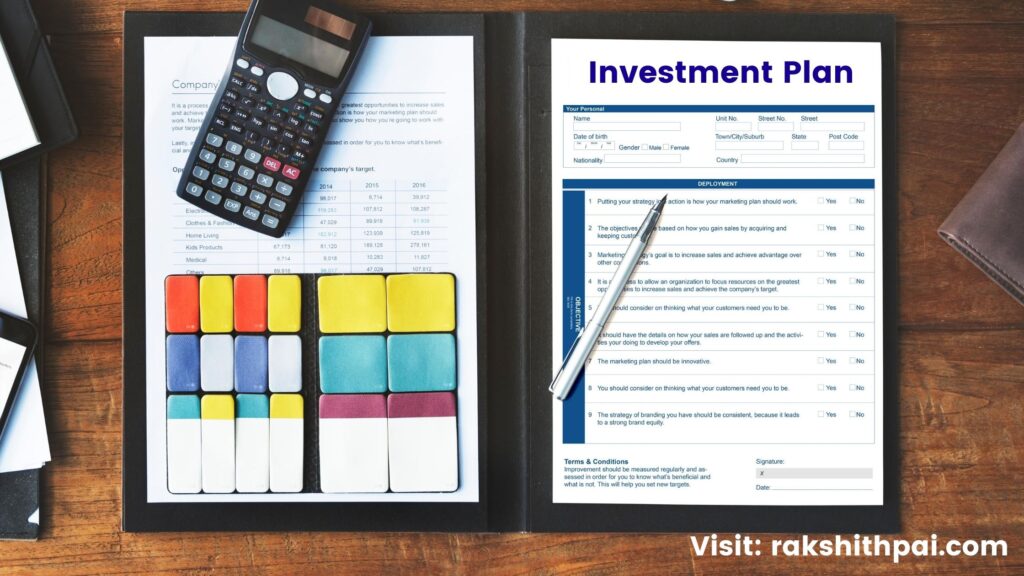Table of Contents
What is a Mutual Fund?
A mutual fund is a collection of funds that are professionally managed by a fund manager. A trust that invests money in stocks, bonds, money market instruments, and/or other securities after collecting funds from a number of participants who have similar investing goals.
Mutual funds are the best option for investors who don’t have a lot of money to invest or who don’t have the time or desire to do market research but still want to increase their wealth.
Professional fund managers invest the money raised in mutual funds in accordance with the scheme’s declared goals. The fund house requests a tiny fee in exchange, which is subtracted from the investment. The Securities and Exchange Board of India (SEBI) regulates all mutual fund operations.
Types of Mutual Fund:
One of the most comprehensive, simple, and adaptable ways to build a diverse portfolio of investments is through mutual funds. Different types of mutual funds provide various possibilities to accommodate investors’ various risk appetites. There are many sorts of mutual funds that are now on the market that assist you in making a well-informed investing choice as per your preference.
Generally speaking, a mutual fund will either invest in debt, equity, or a combination of both. Additionally, the mutual fund schemes might be open-ended or closed-ended.
Everything you need to know about Mutual Fund Investing:
Seven (7) well-known Mutual fund Variants:
- Index Mutual Fund
- Equity Fund
- Debt Fund
- Global Fund
- Balanced Fund
- Speciality Fund
- Exchange Traded Fund (ETF)
For more information on Mutual Funds, CLICK HERE!

How to Invest in a Mutual Fund?
You can invest in a Mutual Fund in two following ways;
Systematic Investment Plan (SIP)
A Systematic Investment Plan (SIP), also referred to as a SIP, is a tool provided by mutual funds to help investors make disciplined investments. With the SIP option, an investor can put fixed amounts of money into the mutual fund scheme of their choice at set times.
Via SIP, you invest in a Mutual Fund in a timely manner at preferred intervals. Most SIP will be a monthly investing scheme wherein, you must invest in the mutual fund every month and hold onto your investments for the long term to get maximum benefit.
Lump Sum
A single whole sum of money is referred to as a lump sum. A lump-sum investment is one in which the entire cash is invested all at once. For instance, a mutual fund investment will be referred to as a “lump sum” if the investor is willing to put the entire quantity at his disposal into the mutual fund.
This is suggested for two kinds of investors.
- Investors in their early 20s and 30s with sufficient “leftover money”. Such investors can invest in a good mutual fund and take maximum benefit of compounding.
- Investors in their late retirement, such investors can invest their pension & other retirement benefit amounts in a lump sum account.
How to Maximise Your Mutual Fund Returns?
Finding and purchasing the finest mutual funds isn’t the only step in obtaining the highest profits from them. To enhance your success, there are a few tried-and-true investing guidelines and mutual fund investing advice. You may maximize returns by using these five easy steps rather than chasing performance.
Without further ado, here are five strategies to improve mutual fund performance.
Aggressive Funds
Mutual Funds that Invest aggressively in risk-taking ventures come under aggressive funds. Such investments are not suggested for all investors. Infact, only risk-taking investors who have both time & patience with them must invest in aggressive mutual funds.
Following are some of the example for Aggressive Funds:
- Small-Cap Equity Mutual Fund
- Small & Mid-Cap Fund
- Momentum Investing Fund
- Quant Mutual Fund
- Flexi-Cap Fund etc.
Lump sum & SIP
A mix of Lump sum investing and investing via SIP is the most suggested choice for investing in a Mutual Fund. We need to invest lump sums whenever possible to take the maximum benefit of compounding. And, regularly invest via SIP to take benefit of all market conditions such as volatility.
You may start a SIP with as little as Rs. 500 and make contributions towards it on a monthly basis for a certain amount of time. The majority of fund companies even make it possible for you to have your SIP payments deducted automatically from your bank account. This assists you in developing sound practises about financial investments.
Lumpsume Investments is making large investments. Espeically when the market is down, like during a correction or a market crash. Making use of these market downturns will assist us in averaging down our total investment purchase cost.
By investing lump sum when the market is down and continuing SIP throughout the market’s different phases, an investor can not only reduce their overall risk. But, also make good returns over time.
Dollar Cost Averaging
The investment approach known as dollar-cost averaging (DCA) involves buying investments on a regular basis. DCA’s strategy is to lower the investment’s overall cost per share. Additionally, an automatic purchasing plan is implemented for the majority of DCA schemes. With such an automated system, there is no longer a chance for investors to make bad choices based on their emotional responses to market volatility.
To put it another way, under DCA, investors buy shares in all market conditions, including bear markets where share prices are decreasing. It also ensures that money continues to flow into your portfolio. Simply defined, you buy regardless of the circumstances in order to benefit from the gradual increase in price. You can make your own DCA by setting up a systematic investment plan (SIP) at the brokerage house or mutual fund company of your choice.
Diversify
Investing all of your money in one type of mutual fund asset class is a risky move. Why? Because your returns will be impacted if the asset class underperforms.
While it is important to invest your money, it is equally important to invest in the right things. You may diversify your portfolio by investing in the appropriate assets. Risk can be reduced by diversification. Thus, you can reduce risk and increase profits by investing in a variety of assets. Say you want to purchase a home in 15 years. You’ll need a sizable sum of money to accomplish this.
Mutual equity funds can assist you in achieving this objective. But you also want to reduce the chance that you’ll lose your money. You can benefit from portfolio diversification in this circumstance. By putting the remaining 20% in debt mutual funds, you can reduce risk and increase returns by investing the balance 80% of your money in equity mutual funds.
Diversified asset allocation leads to wealth creation.
Active over Passive Fund
An active fund is a mutual fund scheme where the fund manager “actively” manages the portfolio and regularly examines the portfolio of the fund, choosing which stocks to acquire, sell, or hold when using his professional judgment, supported by analytical research. In an active fund, the goal of the fund manager is to get the best returns and beat the scheme’s benchmark.
A passively managed fund, in contrast, merely replicates or tracks the scheme’s benchmark index in precisely the same proportion. This means that the fund manager in a passive fund remains inactive or passive insofar as he does not use his judgment or discretion to decide which stocks to buy, sell, or hold.
An index fund and all exchange-traded funds are examples of passive funds. In a passive fund, the goal of the fund manager is to copy the scheme’s benchmark index or to get returns that are the same as the index, rather than to beat the benchmark.
Revisit Portfolio
This is an essential part of any plan for investing in mutual funds. After all, placing money into a sluggish fund that does not generate significant returns over the long run is the simplest way to lose money when investing. And that’s why you need to keep an eye on how your funds are doing on a consistent basis. For that, you must understand how the market cycle works and how returns are generated over time. the art of calculating the return on mutual funds.
Compare the performance of your funds over the past year to that of the benchmark and the broad market index. If you want to make the most money from mutual funds, your fund should do better than the market average. If your assets haven’t grown at all over the past three years, while the peer funds have done well, you may wish to cash them out and put the money towards something that has done better.
Conclusion:
Investors in mutual funds should frequently assess the success of their investments and reallocate funds as appropriate. To make sure it is on track, experts advise assessing it once or twice a year. Additionally, before deciding on an exit strategy, investors should look at the performance of the industry if the fund’s performance is below expectations.
The finest mutual funds will mix a proper allocation that matches both your long-term investment objectives and your risk tolerance. Once you know what you want to do with your money and where you wish to invest, investing in mutual funds is much easier.
Making the appropriate investments is essential for achieving financial objectives. You should consider using mutual funds as an excellent choice to help you achieve your financial goals. There are numerous mutual fund plans as well. So, you need to learn about them and choose the one that fits your risk tolerance and investment goals the best.
Disclaimer: All the information on this website is published in good faith and for general information purposes only.









